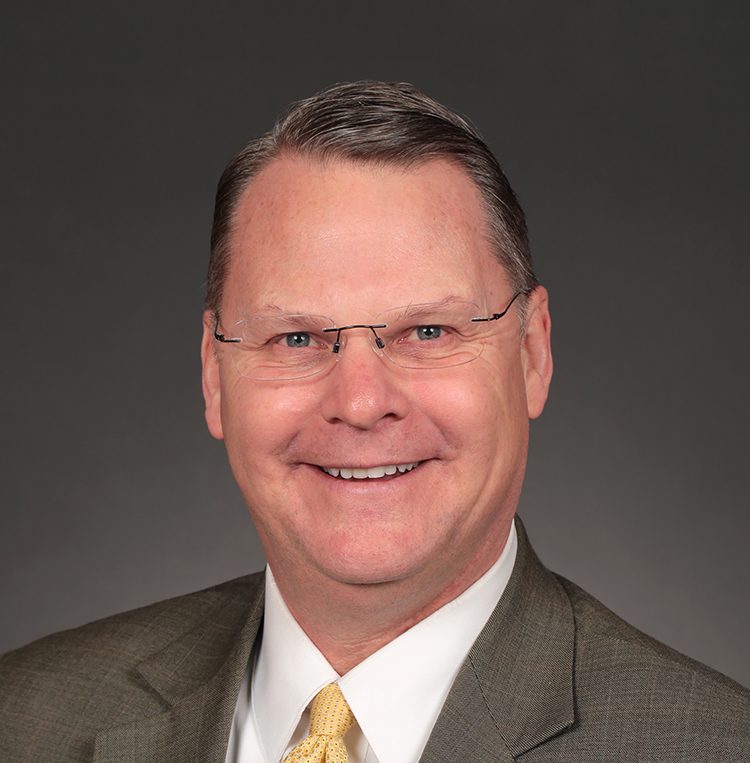This week, we received more good news about the Iowa economy. The Bureau of Economic Analysis reported Iowa’s economy grew 6.3 percent in the last few months of 2020, which is faster than many of our neighboring states. This news, along with one of the lowest unemployment rates in the country, is encouraging as Iowa recovers from the pandemic. It also demonstrates why pro-growth policies are important – they help grow our economy, open up jobs so people can work, and ensure we are prepared when difficult times hit. We will continue advocating for pro-growth policies at the Capitol and make this state the best for living, working and raising a family.
New property assessments arrived in many Iowa mailboxes. Property assessments, along with local levy rates, are the factors in determining property taxes paid by Iowans and these sharp increases in value can lead to painful property tax increases for Iowans. When assessments rise, property taxes increase, even if the levy rate stays the same. In 2019, the Legislature passed significant property tax reform to improve transparency around the property tax process and give property taxpayers more information to engage into local taxing decisions.
This session the Iowa Senate is again working to reduce the property tax burden. SF 587 eliminates the property tax levy on mental health and shifts funding to the state level. Eliminating this levy not only means over $100 million in reduced property taxes, it also has a compounding effect in future years because, as property assessments rise, the elimination of the levy will reduce the increase in property taxes when assessments rise.
In January, the Senate passed SF 159, the governor’s parental choice in education bill. The bill contained eight divisions covering Student First Scholarships, open enrollment, charter schools and many other topics. When the House received the bill, they chose to split the content into several new bills.
This week, I was a member of the subcommittee for HF 813, which modifies and establishes charter schools in the state. There are many misconceptions about this bill, partly due to the changes made throughout the process. Here is a summary of the bill as passed out of the Senate Education on Thursday. It is now eligible for debate on the Senate floor next week.
HF 813 creates two models by which a charter school may be established: school board-state board model and founding group-state board model. The first model already exists under current state law. Under the founding group-state board model, a founding group may apply to the state board for approval to establish and operate a charter school within the boundaries of the state that operates independently from any public-school district. Who are these founding groups? They are usually a nonprofit organization, but can even be a group of interested parents and community members.
Charter schools are tuition-free public schools open to all students regardless of their zip code. NO tuition is charged and there are no entrance requirements. Charters are not private schools. Also, no public school, whether traditional or charter, can operate as a religious school.
Charter schools still need approval by the State Board of Education, and they are held to the standards set out in their charter in order to receive funding. Funding for each student attending a charter school will flow through the district of residence, similar to open enrollment, and includes the state cost per pupil, the teacher leadership supplement, and additional weightings. For students attending a charter school who had not been included in the previous year’s enrollment count, the bill establishes a general fund standing unlimited appropriation to the Department of Education to be paid to the charter school for the students’ initial year of enrollment in the charter school.
The public charter school model empowers teachers to provide innovative, high-quality instruction by giving them the autonomy to design a classroom that fits their students’ needs. Public charter schools are led by principals who have the flexibility to create a school culture that fosters student performance and parent satisfaction. They can provide greater flexibility to serve a diverse and changing student population.
Public charter schools are held accountable to the performance standards in their charter and by their communities. If they are not meeting the standards set out in their charter, they can be closed.
Iowa currently only has two charter schools. Why haven’t charter schools succeeded in Iowa? New charter school applications are required to be made to the district in which the charter school would reside. The charter would then be required to follow all of the district’s rules, and employees of the charter would become employees of the district subject to their labor contracts. The current law does not provide the legislative framework for public charter schools to succeed.
















